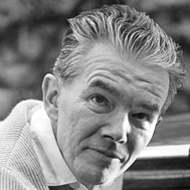Jan Novak was born in a small town in south-west Moravia, the birthplace of the Vranicky brothers Pavel and Antonin, themselves well-known Viennese composers at the end of 18th century. The Premonstratensian monastery, which has dominated the little town over centuries, used to be the region's centre of education and culture as well as of music. Novak's parents earned their living partly in the monastery, where they also had their family home. The boy received a thorough education in the humanities at the grammar schools in Velehrad, a place of Old Slavonic Christian tradition, and in Brno. This, together with the home atmosphere, influenced the development of his personality, primarily directed towards music. In adulthood music was joined by Latin, which became an obsession with him and which he incorporated into his compositions. From early childhood Jan Novak showed great musical talent, especially on the violin, piano and organ. During his grammar school years this talent was reflected in his first compositions. This brought him to the Brno Conservatoire, where he studied composition with Vilem Petrzelka, and piano with Frantisek Schaeffer, the best piano teacher in Brno. His studies at the conservatoire were interrupted by two and half years of forced labour in Germany during the second World War. In 1946 he graduated with a string quartet and the Dance Suite for orchestra. He then went on to the Prague Academy of Music Arts where he studied composition with Pavel Borkovec, before returning to Brno for a further period of study with Petrzelka. He completed his studies with a scholarship to the USA awarded by the Jezek Foundation. He spent the summer of 1947 at the Berkshire Music Center in Tanglewood, Mass., where he worked with Aaron Copland. At concerts presented by the students, he performed his Little Preludes and Fugues on a Theme of Janacek and the song cycle Carmina Sulamitis. For five months he studied with Bohuslav Martinu in New York, from where he returned on 25th February 1948, the day of the Communist takeover in Czechoslovakia. He then settled down in Brno where he lived as a freelance composer. "I did what I could to make both ends meet", he later admitted in a brief autobiography. He composed incidental music, music for short and puppet films and radio plays. He sometimes played in radio programme with his wife in compositions for two pianos, many of which were his own works. Such a liberal minded composer, with his uncompromising artistic and public attitudes, came into continuous controversy with official authorities and with the dogmatism of the leading representatives of the composers union. It is not surprising that he suffered discrimination. This was one of the reasons which led him to leave the country after the 1968 invasion. He lived in exile in Denmark, Italy (1970-1977) and finally in West Germany. Jan Novak's early works showed his talent and a disciplined technical mastery of composition which ranked him among most promising members of the young post-war generation. Of the great number of compositions from this early period, only Carmina Sulamitis, a song cycle, was later approved by the composer himself and recognized by him as worthy of attention.
This starts the long series of Novak's Latin songs leading up to the extensive cantata Dido, the medieval miracle play opera Dulcitius and the ballet with lyrics, Aesopia. Jan Novak's meeting with Bohuslav Martinu had "substantive and immense significance" for the young composer. Martinu taught him the art of refinement of motifs; he discovered for him the wealth of possibilities in rhythm introduced him to his own favorite composers [Morley, Corelli, Haydn] and gave him an insight into his own creative process. For twelve long years until Martinu's death, the two composers corresponded and Martinu communicated to Jan Novak a wealth of advice.
The first period of Novak's work marked by "Care pater, bone Martinu" ended in the late 1950s. During this period he developed the main characteristics of his work: the clear structure of form, mastery of instrumentation, complexity and free tonality. The early sings of his particular vocal style showed an unsentimental melodic line, using a balanced cantilena, parlando and ornamentation. Symbolically this period is framed by the Variations on a Theme by Bohuslav Martinu, which Novak wrote for piano in 1949 and orchestrated ten years later in the year of Martinu's death. Seven variations on the final motif of Martinu's Field Mass and the final double fugue, demonstrate Novak's technical maturity. He was always open to all new trends which he accepted or rejected according to his own feelings and without any respect for ideologies or current fashion. In this way he became acquainted with the principles of serialism and New Music at the turn of the 1960s. He adopted them only as he saw them appropriate to his purpose. The 12 tone system was used wisely and with wit in several compositions - for the first time in the middle movement of the Capriccio for cello and orchestra, in the lyrical Dulces cantilenae and with great mastery in the composition Passer Catulli for bass and nonet. However, he never became an apostle of serialism. In this period of his life he discovered attractive source of musical inspiration in his old love of Latin. This language was for him the source of musical poetry, which was reflected in a great number of vocal compositions in which the classical rhythm of Latin poetry was revived. Ancient, medieval and modern Latin texts [ many of which he wrote himself ] also influenced the formal scheme of the music as well as shaping its melody. Novak found his very personal musical language through this universal written language. His music never lacked creative invention, omnipresent humour and wit, so rare in an age of tragedies and dramatic changes.

